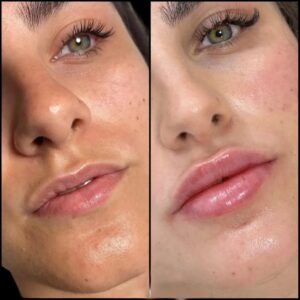Dialectical Behavior Therapy (DBT) is a type of psychotherapy developed by Dr. Marsha Linehan in the late 1980s. Initially designed to treat individuals with borderline personality disorder (BPD), DBT has since become a highly effective therapeutic model for various mental health conditions. With its combination of cognitive-behavioral techniques and mindfulness practices, DBT aims to help individuals manage emotional distress, develop healthier coping mechanisms, and improve relationships. This article explores what DBT therapy is, its core components, and its benefits for mental health treatment.
What is DBT Therapy?
DBT therapy is an evidence-based treatment designed to help individuals struggling with emotional regulation and interpersonal difficulties. Unlike traditional therapy approaches, DBT focuses on balancing acceptance and change. The therapy combines cognitive-behavioral therapy (CBT) techniques with principles from mindfulness and acceptance-based therapies, aiming to help individuals understand and regulate their emotions more effectively.
Originally developed for individuals with borderline personality disorder, DBT has expanded to treat various conditions, including depression, anxiety, PTSD, eating disorders, and substance use disorders. The core philosophy of DBT emphasizes the importance of validating the person’s emotional experience while simultaneously encouraging change in maladaptive behaviors.
Core Components of DBT Therapy
DBT therapy is structured around four key components, each of which plays a vital role in the treatment process. These elements work together to help individuals manage their emotions, develop better interpersonal skills, and create a life worth living.
Mindfulness
Mindfulness is at the heart of DBT. This component encourages individuals to focus on the present moment without judgment. By cultivating mindfulness, individuals learn to observe their thoughts, emotions, and physical sensations without becoming overwhelmed or reactive. Mindfulness practices help individuals develop awareness of their emotions and identify patterns of behavior, allowing them to respond more effectively in challenging situations.
Distress Tolerance
Distress tolerance is another critical aspect of DBT. This component helps individuals cope with emotional distress in healthy and productive ways. Instead of resorting to destructive behaviors such as self-harm or substance abuse, distress tolerance skills teach individuals how to tolerate intense emotions and ride out difficult moments. These skills include strategies such as distraction, self-soothing, and finding alternative coping mechanisms.
Emotion Regulation
Emotion regulation is a central focus of DBT therapy. Individuals who struggle with emotional dysregulation may experience extreme mood swings, impulsivity, or difficulty controlling their reactions. DBT helps individuals understand the connection between thoughts, feelings, and behaviors, allowing them to regulate their emotions more effectively. Techniques for emotion regulation include identifying and labeling emotions, understanding the triggers of emotional reactions, and learning strategies for reducing the intensity of negative emotions.
Interpersonal Effectiveness
Interpersonal effectiveness is crucial for individuals who struggle with relationship difficulties. DBT teaches skills to improve communication, set boundaries, and assert needs in a respectful and effective manner. Interpersonal effectiveness helps individuals navigate social interactions, reduce conflict, and build healthier relationships. Through these skills, individuals can better manage their interpersonal challenges, such as fear of rejection, emotional dependency, and difficulty expressing their feelings.
The Structure of DBT Therapy
DBT therapy typically involves a combination of individual therapy sessions and group skills training. The structure of DBT ensures that individuals receive both personalized guidance and the opportunity to learn and practice skills in a group setting.
Individual Therapy Sessions
Individual therapy sessions in DBT are tailored to meet the unique needs of each person. The therapist works collaboratively with the client to identify specific challenges and goals. During these sessions, clients learn how to apply DBT skills to real-life situations and receive support in navigating difficult emotions and behaviors. The therapist also helps the client address any crises or setbacks that may arise during the course of treatment.
Group Skills Training
In addition to individual therapy, DBT includes group skills training, where individuals learn and practice the core DBT skills with others. Group sessions are typically structured around the four core components of DBT: mindfulness, distress tolerance, emotion regulation, and interpersonal effectiveness. The group setting provides a supportive environment where individuals can share experiences, practice skills, and receive feedback from others facing similar challenges.
Phone Coaching
Phone coaching is another unique feature of DBT therapy. Clients can contact their therapist between sessions for support in handling difficult situations in real-time. This can be especially helpful when clients are feeling overwhelmed or when they need guidance on how to apply DBT skills in a specific moment. Phone coaching helps individuals stay on track with their treatment goals and reinforces the use of DBT skills in everyday life.
The Benefits of DBT Therapy
DBT therapy offers a wide range of benefits for individuals struggling with various mental health issues. While it was originally developed for those with borderline personality disorder, DBT has proven effective for a diverse group of individuals, including those with mood disorders, eating disorders, substance abuse issues, and trauma-related conditions.
Improved Emotional Regulation
One of the most significant benefits of DBT is its ability to help individuals regulate their emotions more effectively. By teaching skills such as emotion regulation and mindfulness, DBT enables individuals to manage intense feelings without resorting to harmful behaviors. This can lead to greater emotional stability and a reduced risk of emotional dysregulation, impulsivity, and self-destructive tendencies.
Reduced Self-Harm and Suicidal Behaviors
DBT has been shown to be particularly effective in reducing self-harm and suicidal behaviors in individuals with borderline personality disorder and other high-risk populations. Through the use of distress tolerance and emotion regulation skills, individuals can learn healthier ways to cope with emotional pain and distress, reducing the urge to engage in self-destructive behaviors.
Improved Relationships
DBT’s focus on interpersonal effectiveness helps individuals build healthier and more fulfilling relationships. By teaching communication skills, conflict resolution strategies, and boundary-setting techniques, DBT enables individuals to express their needs and emotions more effectively. This can lead to improved relationships with family, friends, and romantic partners.
Enhanced Quality of Life
Overall, DBT aims to help individuals create a life worth living. By learning how to manage emotions, build healthier relationships, and cope with distress, individuals can experience greater overall well-being. DBT’s focus on acceptance and change encourages individuals to move toward personal growth and self-improvement, leading to a more balanced and satisfying life.
Conclusion
DBT therapy is a highly effective treatment for individuals struggling with emotional regulation, interpersonal difficulties, and self-destructive behaviors. Through its core components—mindfulness, distress tolerance, emotion regulation, and interpersonal effectiveness—DBT equips individuals with the skills necessary to manage their emotions and improve their relationships. Whether used to treat borderline personality disorder, mood disorders, trauma, or other mental health conditions, DBT offers valuable tools for emotional healing and personal growth.


